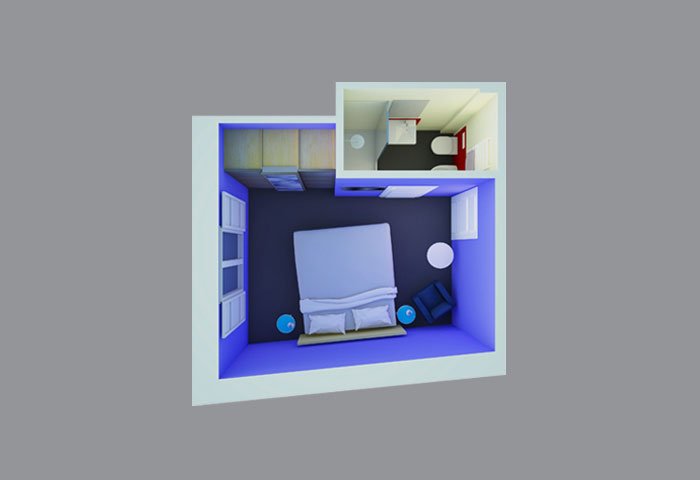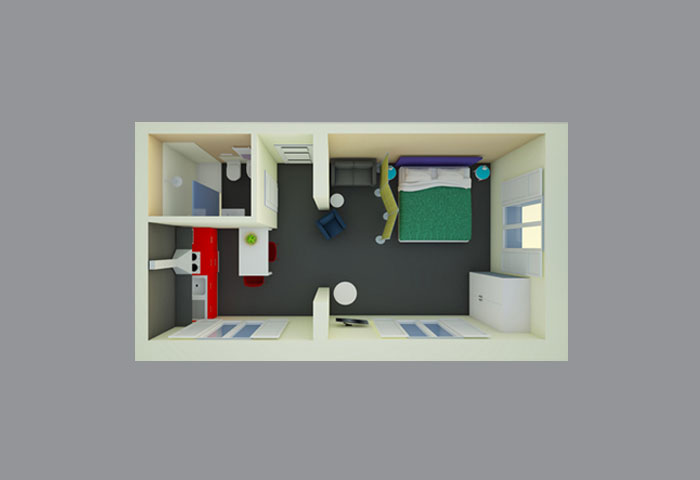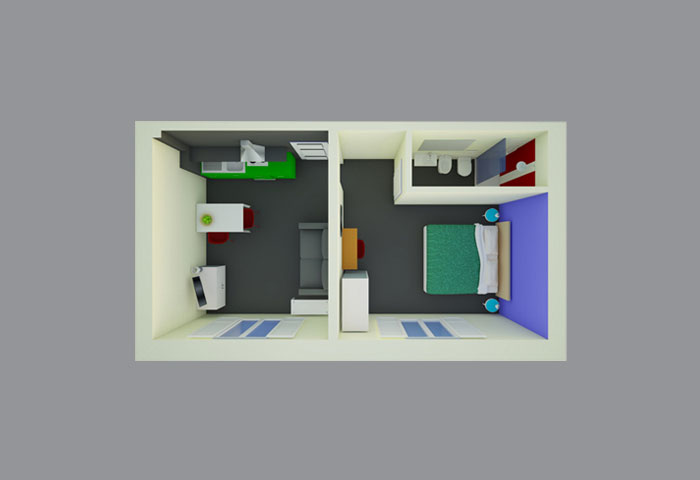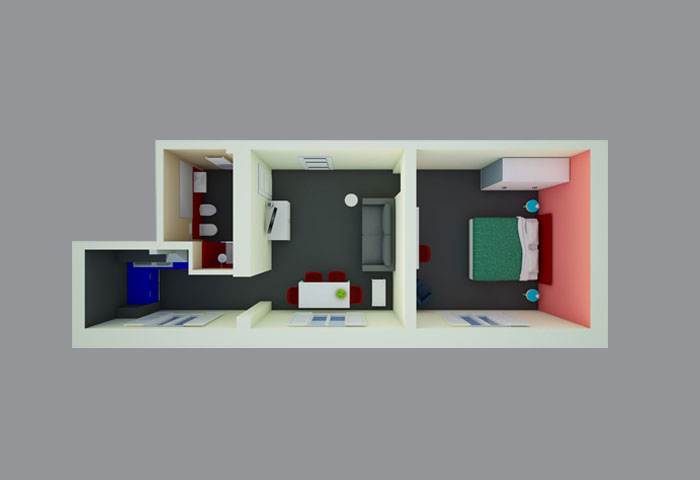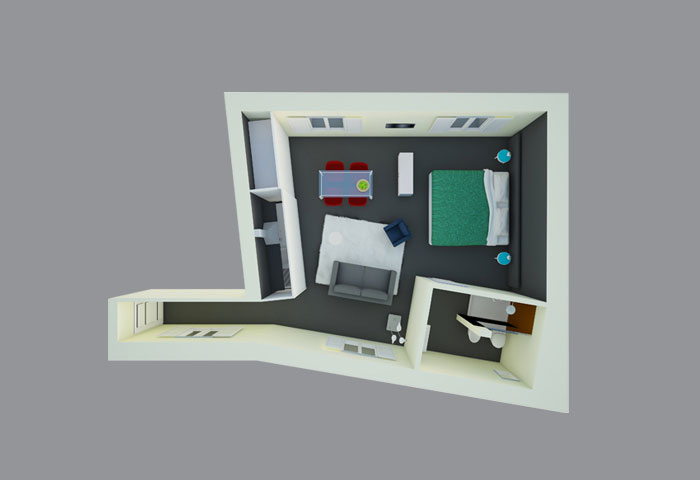A PLACE WITH A SOUL
and deep roots in city history
Almarossa is housed in a handsome five-story redbrick structure dated back to the 1920s.
While recent renovations have allowed for many updates for modern convenience and comfort, the interior design maintains many of the original elements inspired to a simple Liberty style.
The historical neo-Gothic structure is visible and emphasized in the exterior facade, typical of Bologna in the early twentieth century. This feature bears witness to the city's transformation during that time.
The building is located inside the city walls, walking distance from Central Station in an area brimming with restaurants and attractions.
Almarossa resides at a well-known intersection: via Mascarella, the heart of one of the most popular and picturesque quartiers, and via Irnerio, which connects the city center with the University district.
Almarossa invites travelers to explore the celebrated attractions of Bologna, an Italian city known for its art and culture, business meetings, fairs and shopping. A food capital and a reputed center of learning and knowledge.
Main Features of Almarossa
- Fully furnished rooms, serviced studios, and suites of different sizes
- Modern features providing comfort, service, and safety (climate control, free Wi-Fi, wide screen TV, access control, CCTV, fire alarm system, etc.)
- Inner courtyard
- Pay parking in the vicinity with no need to advance book
- Pets welcome
- An ideal location to stay and discover the city, whether for business or leisure
A bit of history
This particular area of the city was a lower-class district that bordered a community garden in the late 1800s . Today, this area is dedicated to the Botanical Garden and Herbarium of the University .
The building is linked to the city's transformation, which can be seen in its architecture. In particular, Almarossa embodies the completion of the front of Via Irnerio, which began in 1889 and completed in the second half of the 20th century.
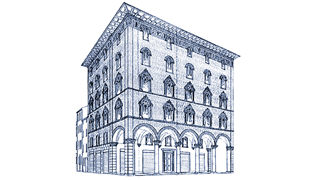 Source of the image is the catalog of the Exhibition "Norma e arbitrio" Architects and Engineers in Bologna 1850-1950, 2001 Civic Museum.
Source of the image is the catalog of the Exhibition "Norma e arbitrio" Architects and Engineers in Bologna 1850-1950, 2001 Civic Museum.
This refurbishing of the area at that time was a process of gentrification, where older and poor buildings were replaced with more prestigious ones. For instance, the beautiful building across the street from Almarossa, on the opposite side of the corner, is the Sanguinetti house, which is dated back to 1907.
The construction of Almarossa started in 1926 and continued for the following 2-3 years.
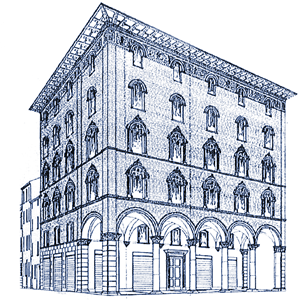
Source of the image is the catalog of the Exhibition "Norma e arbitrio" Architects and Engineers in Bologna 1850-1950, 2001 Civic Museum.
Our Special Deals

Special Long Stay
After 3 nights, the more you stay in Almarossa, the lower the cost of the nights. Discover the advantages of the long stays, the deal "stay 1 month at the cost of 3 weeks" and more opportunities at +39 051 019.0011 or info@almarossainn.it
Email us
